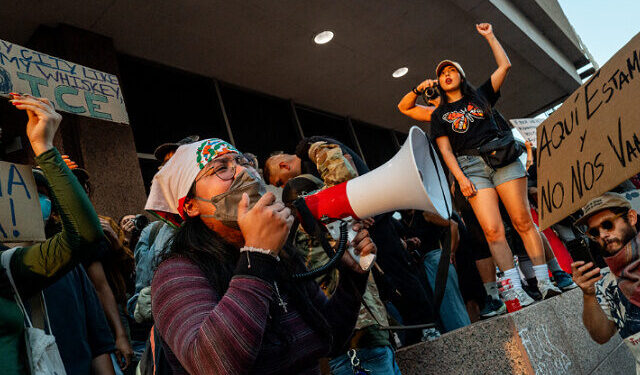Over the weekend, what began as demonstrations in Los Angeles quickly swept across the nation—with protests in San Francisco, Dallas, and even Austin and San Antonio. Here’s a breakdown of what happened—and why it matters.
Los Angeles saw anti‑ICE protesters swarming onto the 101 freeway, blocking lanes and wielding foreign flags. Videos show makeshift barricades and clashes with law enforcement. Riot police responded—and in the face of escalating disorder, President Trump ordered 2,000 National Guard troops and even 700 Marines into downtown L.A. to support Immigration and Customs Enforcement efforts.
The unrest didn’t stop at the Bay. In San Francisco, around 150 protestors rallied outside ICE’s office. While the protest began peacefully, it ended with vandalism and the arrest of 148 adults and six minors, some of whom attacked police vehicles .
Dallas: Over the weekend, a crowd briefly blocked traffic at the Margaret Hunt Hill Bridge, waving foreign flags and chanting against ICE raids .
Austin: Protestors toppled barricades and threw objects at police during a peaceful action that turned fiery when a vehicle was set ablaze and two arrests occurred for aggravated assault .
These Texans echoed a clear message: immigration enforcement is a hot‑button issue, and the backlash is real.
Fox 4 Dallas-Fort Worth reported the clashes and arrests in Dallas and Fort Worth, pointing out the rising tensions tied to ICE’s enforcement policy.
Fox 7 Austin highlighted how even routine ICE operations were enough to spark significant turnout—and heartbreak. One protester shared, “This terror is dealt with and resolved,” capturing the sense of fear in the immigrant community .
- Federal action: The Trump administration’s decision to deploy the National Guard and Marines shows how seriously it takes the national security challenge posed by illegal immigration and related unrest.
- Local leaders push back: California’s Gov. Gavin Newsom and L.A. Mayor Karen Bass called the federal mobilization “authoritarian” and vowed to fight it. Meanwhile, conservative voices in Texas signaled support for enforcement and national sovereignty.
- Cultural flashpoint: This isn’t just a policing issue—it’s a flashpoint of ideology. Conservatives insist America’s laws must be enforced; critics argue enforcement ignored humanitarian concerns.
Bottom Line: Anti‑ICE protests have moved from local demonstrations to a coast‑to‑coast movement. The Biden administration would likely have avoided this escalation—but under Trump’s return, immigration enforcement has become a central, and confrontational, front in the national debate.




















